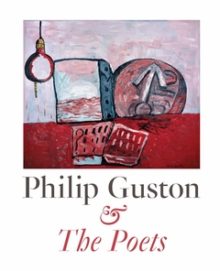INTERVIEWS:
When I Think, I Listen the Hardest: An Interview with John T. Lysaker
Interviewed by Scott F. Parker
With prose full of wit, self-awareness, even self-doubt, and always good will, professor John T. Lysaker’s books take philosophy personally.
Poetry Is Thought As Feeling: An Interview with Karen Garthe
Interviewed by bart plantenga
Karen Garthe’s poetry is that ruminating bouquet, a cognitive dissonance of richness in the realm of austerity. She discusses her recent collection The hauntRoad with author bart plantenga.
The Terror of Freedom: an interview with Robert Kloss
Interviewed by Gavin Pate
Robert Kloss discusses his early work, as well as his new novel, A Light No More, a hybrid work that infects the reader with a harrowing vision of the world.
COMICS REVIEWS
Freedom Hospital: A Syrian Story
Hamid Sulaiman
Harrowing, honest, and politically embedded in a way that Western readers will find devastatingly illuminating, Freedom Hospital tells an important modern story in a fresh and unconventional format. Reviewed by Jeff Alford
POETRY REVIEWS
We Step into the Sea: New and Selected Poems
Claudia Keelan
Keelan’s assured language, verbal clarity, and her commitment to finding the life that has been left out make this a book more than a sampling. Reviewed by Brian Evenson
Catafalque
Adam Tavel
Tavel taps the spirit of Edgar Allan Poe in his award-winning collection, exploring a gamut of personal pain with a heavy, heart-like rhythmic beat. Reviewed by Dana Wilde
Light Wind Light Light
Bin Ramke
Ramke’s thirteenth volume continues his questioning into subjective and objective realities, creating “lines and layers” where consciousness meets quantum and cosmic patterns. Reviewed by Cindra Halm
Exclusions & Limitations
Jennifer O’Grady
Exclusions & Limitations exposes the risky business of being a parent, of experiencing love, of being alive. Reviewed by Eileen Murphy
Poet and The Circus
Clark Coolidge
Clark Coolidge is a powerhouse among poets; over the years his sheer output has been nothing less than monumental, and at seventy-nine years of age shows no signs of stopping. Reviewed by Patrick James Dunagan
FICTION REVIEWS
My Struggle: Book Six
Karl Ove Knausgård
Apprehending and articulating the unspoken ephemera of life is this author’s obsession, and the form in which he dredges it out is a unique blend of diary and realist novel. Reviewed by Chris Via
The Bird Catcher and Other Stories
Fayeza Hasanat
Bangladeshi-American author Fayeza Hasanat's main characters are women and other marginalized people whose lives are determined by men. Reviewed by Laura Nicoara
Red Clocks
Lena Zumas
Lena Zumas’s Red Clocks brilliantly combines the forms of speculative fiction and thriller to tell the intertwined stories of four women in an Oregon fishing town. Reviewed by Julia Stein
Transit Comet Eclipse
Muharem Bazdulj
The movement of celestial bodies creates a thematic atmosphere throughout the novel, in counterpart with the more mundane movement of characters as they cross borders and travel through frontier lands. Reviewed by Seth Rogoff
For Other Ghosts
Donald Quist
Quist’s For Other Ghosts follows a path traced by his award-winning nonfiction collection Harbors: narrative as a map and its trajectory as a layered rather than a linear move. Reviewed by Nick Hilbourn
Suicide Club
Rachel Heng
Heng’s debut novel Suicide Club depicts a near-future dystopia in which optimized healthcare for the privileged few creates a society where the inevitability of death is replaced by the inevitability of living. Reviewed By Rachel Hill
Metamorphica
Zachary Mason
Mason returns to revamping classics with his turn at Ovid’s Metamorphoses, ably suspending his predilection toward scientific exactitude in favor of artistic liberty and poetic flourish. Reviewed by Chris Via
NONFICTION REVIEWS
16 Pills
Carley Moore
Moore’s essays are like quicksilver; they move from pithy pronouncements to TMI moments of confession to acute observations. Reviewed by Celia Bland
CREDO: An Anthology of Manifestos & Sourcebook for Creative Writing
Edited by Rita Banerjee and Diana Norma Szokolyai
The relationship the individual has with their craft is explored via three different forms of writing-on-writing: manifestos, statements on craft, and writing exercises. Reviewed by Greg Bem
Dreamverse
Jindrich Štyrský
Dreamverse isn’t so much the atlas of Štyrský’s inner world as a set of picture postcards—often scandalous, just as often intoxicating—sent from this land of imagination. Reviewed by Paul McRandle
Preserving Fire: Selected Prose
Philip Lamantia
With entries dated from 1943 to 2001, Preserving Fire gathers an eclectic assortment of essential material by this often-overlooked American Surrealist. Reviewed by Patrick James Dunagan
Rain Taxi Online Edition Winter 2018-2019 | © Rain Taxi, Inc. 2019

